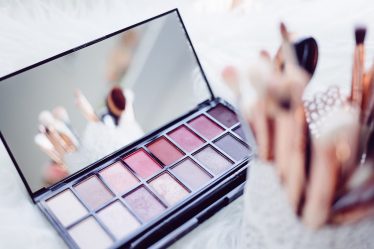
While most people focus on facial acne and sometimes body zits or scalp acne is also an issue. It’s quite common and annoying, especially if you have other issues with acne. “While scalp acne isn’t as common as facial or truncal acne, it’s not rare either,” says Lindsey Zubritsky, MD, board-certified dermatologist at Premiere Dermatology in Pittsburgh and fellow of the American Academy of Dermatology. “People with oily hair or an oily scalp, those who under- or over-wash their hair, those who have acne or folliculitis elsewhere, and those who use excess hair products like waxes, gels, and hairsprays are more prone to scalp acne.”
And while head acne doesn’t necessarily favor one particular hair type or texture, Tiffany Clay-Ramsey, MD, board-certified dermatologist at Dermatology Affiliates in Atlanta and fellow of the American Academy of Dermatology, says that she’s noticed it’s more common in her patients with thin, straight hair–possibly because that hair type tends to be oilier, which in turn can lead to clogged pores.
But before you go diagnosing pesky bumps on your head a la Dr. Pimple Popper, you’ll want to determine what they actually are (not all scalp bumps are acne vulgaris–the clinical term for acne, caused by clogged pores which may become inflamed) and what might be causing them so you can treat them accordingly. That’s where we–and the dermatologists we consulted–come in. Here’s everything you need about scalp pimples, including how to remove them and what products could be contributing.

What causes scalp acne?
Like the pimples that appear on your skin, scalp pimples can occur for many reasons. “Scalp acne can be caused by numerous factors, including but not limited to bacteria, oil or product build-up, hormones, or inflammation,” says Dr. Zubritsky. Her advice: See a dermatologist if you have persistent or worsening pimples. This will help to determine if it is something that needs to be addressed. Dr. Zubritsky says that sometimes what appears to be “pimples” on the scalp could be bumps due to more serious inflammatory medical conditions such as discoid Lupus or lichen planopilaris, or even skin cancer. This is especially true for those who experience bleeding, itching, or flaking.
Scalp acne can be caused by shampoo (and other hair products). Dr. Zubritsky states that products high in oil can clog the pores and cause more oil production. Products containing alcohol or other sulfates can also cause irritation.
What is the difference between scalp acne and folliculitis?
It turns out that you might have folliculitis if your scalp is throbbing with painful bumps. They are very similar. “While acne does occur on the scalp, more often what looks like acne is actually folliculitis,” says Mona Gohara, MD, board-certified dermatologist and professor of dermatology at Yale School of Medicine. According to the Mayo Clinic folliculitis occurs when the hair follicle gets inflamed, usually from a fungal or bacterial infection. It causes red bumps around the roots. Dr. Gohara says that painful bumps can mimic the appearance of acne. They can be caused by occlusive products, such as oils, waxes, or dry shampoos, excessive sweating, and bacterial infection. Although some of the same treatment options for scalp acne and folliculitis are the same, such as avoiding pore-clogging products, regularly washing your hair, you should consult a dermatologist if you are experiencing persistent bumps to diagnose folliculitis. (Learn more about that soon.)
Are there any differences between pimples along your hairline or on your scalp?
Although the causes of pimples around your scalp and hairline can often be the same, the symptoms are often quite different. Dr. Zubritsky states that hairline acne could be caused by normal acne vulgaris, hair folliculitis or ‘pomade’ acne (caused due to the buildup of oily and waxy styling products such as hairspray and gel). Dr. Zubritsky says that pimples on the scalp can be caused by a variety of factors, including how often you wash your hair, what shampoos you use, and which products you use. She also mentions that friction from a hat can cause irritation and trap oil and bacteria.
What is the best treatment for scalp acne?
Your scalp acne treatment will depend on the root cause of the problem. Dr. Gohara suggests taking a step back to examine what you have been doing differently with your hair and face. This could include going longer between shampoos, using dry shampoo more often, or trying new products. These are all common habits that can lead to scalp breakouts. Dr. Gohara suggests reducing your use of products and making changes such as changing your routine. This could include shampooing your hair every other day or weekly, depending on your hair type and lifestyle. Dr. Zubritsky advises that it is important to be consistent in hair washing, especially if you are using a lot of styling products or sweating excessively. She recommends that you avoid heavy hair products such as oils and waxes if you have scalp acne. These can cause more breakouts and clog your scalp’s pores.
What is the best shampoo for scalp acne?
It can be difficult to choose the right shampoo for your scalp when it is breaking out. On the one hand, you want something that will give your scalp a deep clean to clear clogged pores of product, oil, and sweat build-up, but on the other hand, you also don’t want anything too harsh that could further irritate your already .sensitive skin. Dr. Zubritsky says that scalp shampoos should not contain sulfates, be non-comedogenic, and have no fragrance or oil. I also like shampoos that contain salicylic acid (or coal tar, a common ingredient in dandruff Shampoo), as they can reduce oil production and clear blocked pores.
Do you need to exfoliate your scalp?
Although a targeted scalp exfoliating treatment may not be necessary, it is a good idea if your scalp is prone to breakouts. Our experts recommend using shampoos or treatments with glycolic acid or salicylic acid to remove dead skin cells from the pores and prevent buildup. For those days when you haven’t washed your skin in a while, a deep-cleansing shampoo is a good choice. Look for terms such as clarifying or detoxifying on the label. We are generally skeptical about this term, but it usually means that it removes excess dirt, oil, and/or dead skin. Listed below are some derm-approved options: Neutrogena T/Sal Therapy Shampoo ($9), The Inkey List Glycolic acid Exfoliating Scalp Scrub ($13), and Vanicream Shampoo ($11).
It might be worth seeing a dermatologist if your current routine isn’t unusual. If you don’t see any potential pore-clogging issues, or if over-the-counter remedies like acne shampoo aren’t working but your scalp (or folliculitis), persists, it may be worth visiting a dermatologist. Dr. Clay Ramsey says, “Especially if scarring, hair loss, drainage of pus or severe pain are present, it is a good idea to see a dermatologist immediately.” Dr. Clay-Ramsey says, “I also recommend seeing a dermatologist when you’ve tried an over-the-counter treatment for six weeks and haven’t noticed any improvement.” Your doctor will be able to diagnose the problem and possibly prescribe an oral or topical medication that is more targeted and powerful. This should hopefully resolve the problem. Your dermatologist may recommend an anti-fungal shampoo and/or topical treatment if you have folliculitis.
How can you naturally get rid of pimples from your head?
It is best to remove any ingredients or products that may be causing your scalp irritation (waxes, oils, excessive dry shampoo, etc.). If you are interested in natural skin-care products, which are not regulated by FDA, then tea tree oil may be a good option. “It’s anti-inflammatory and antibacterial, making it a great option for those who want to try an alternative treatment,” says Dr. Zubritsky. Look for essential oil as an ingredient in shampoos and other hair products.
What time does it take for a scalp outbreak to heal?
Like most skin treatments, your head acne will not disappear overnight. So patience is important. Dr. Clay Ramsey says that you should see fewer pimples and old ones clearing up in six to eight weeks. These results will only be visible if you work hard. Follow your doctor’s instructions and/or any directions for any treatment products you are incorporating.
Are you able to pop scalp pimples?
Our experts gave a unanimous answer: nope. “Absolutely no picking!” says Dr. Gohara. It can be tempting for pimple-popping enthusiasts (we see you), but each of the dermatologists we talked to agreed that picking at your head acne can cause further inflammation and irritation, and could also introduce bacteria and potentially lead to a serious infection. If you’re a compulsive pimple popper, these strategies for body-focused repetitive disorders might help you resist the urge. You can’t resist the urge to pop pimples. Keep the area clean and let it heal. If you do not treat it properly, it can lead to infection. Self-control can be self-care.



